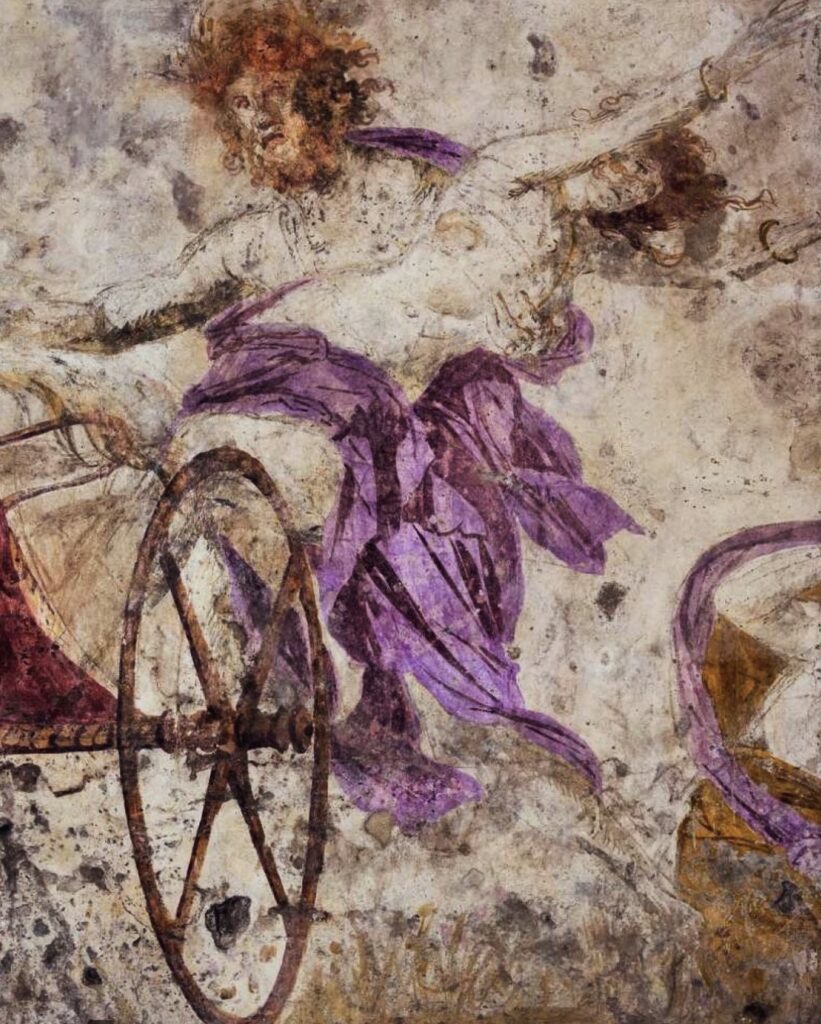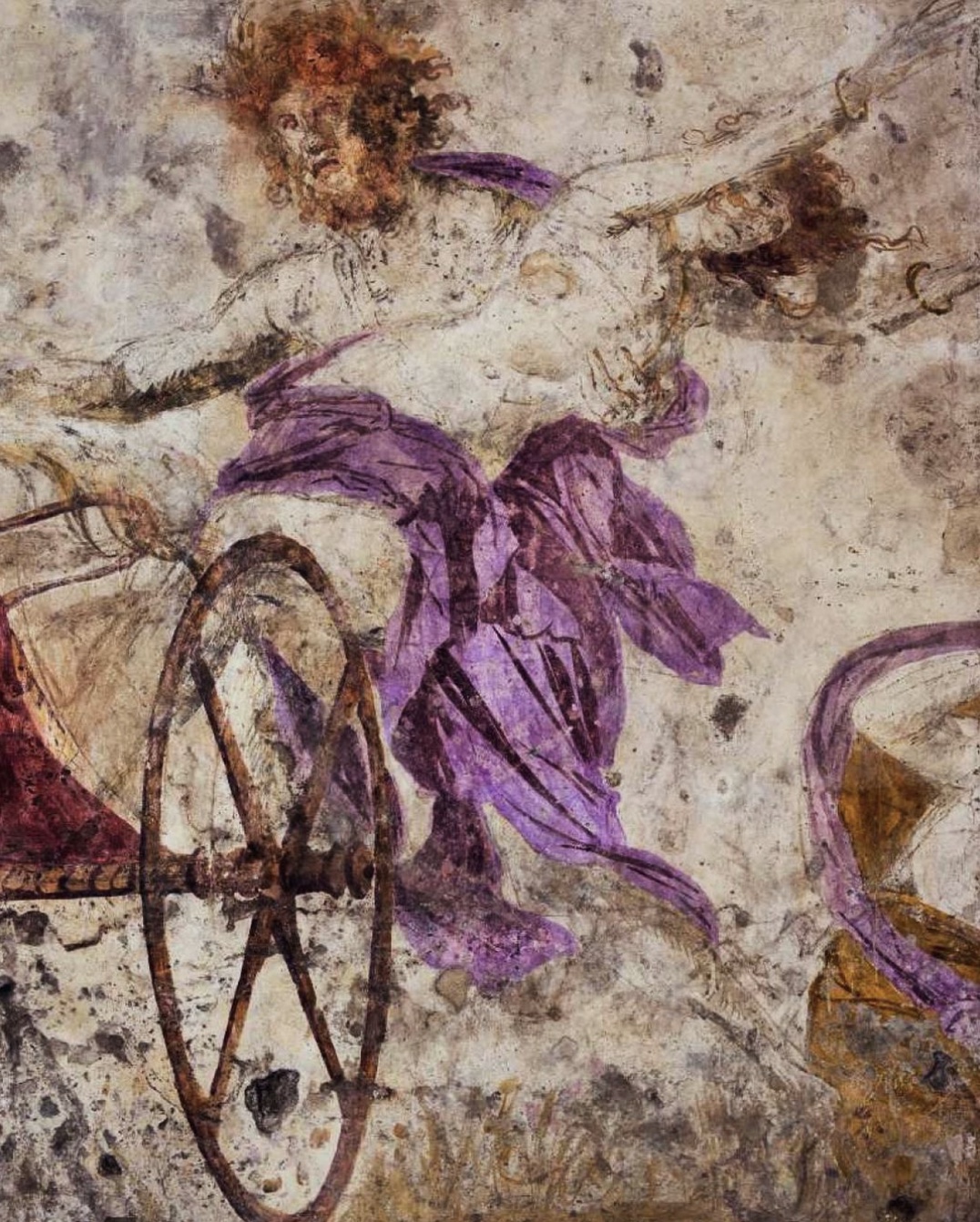While she frolicked in the fields of Nysa and picked flowers with her girlish friends, the earth opened up before Persephone – a gaping chasm from which Hades lunged in his chariot to abduct her as his bride. So begins the archaic ‘Hymn to Demeter’, a primordial tale of divine infighting and maternal rage that was the mythological basis for the division of the seasons in Ancient Greece. And it is the subject of the important wall painting in one of four royal late 4th century tombs in a monumental tumulus at Aigai, the ancient capital of Macedonia.

It’s an extraordinary painting: all vital, rapidly rendered lines, bold colours, effective foreshortening. I’m showing just the central chariot scene and it’s all there, the emotional component ratcheted up with billowing drapery, hair (human and equine) twisting in the wind, and most pitifully Persephone’s plaintive, desperate gesture towards her companion, her wrists encircled with bracelets. Hades’s face is in ominous shadow, his mouth set in a grim line, eyes intent and flashing with challenge.
Every now and then, one is reminded (with a beautiful punch to the gut, such as this) just how much we have lost from the ancient world. Painting was a prestige art form in Classical Greece, a triumph of the greatest artists of the period with panel paintings displayed public consumption in sanctuaries and public gathering paces (the Stoa Poikile in the Athenian Agora, most famously). Virtually none of this Classical mastery survives, and we are left with echoes (important, but unsatisfactory when faced with the enormity of what is lost) in painted vases and decorated sepulchral contexts. Pause for a moment to mourn poor Persephone, and the lost paintings of Greece!




